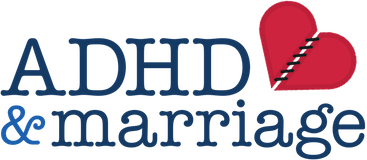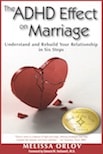I've been "away" from this forum for several weeks, coping with my ADHD spouse's annual Seasonal Affective Disorder (SAD) complications. I had had high hopes for this year -- we had come up with carefully determined formula for taking his seasonal meds and using his light therapy and it seemed to be working great. During years where he doesn't follow his program, we usually aren't talking to each other by the end of January. This year we had a delightful start to the new year, and I was hoping that for the first time in 20 years, we would be able to hold onto the progress we'd made during the non-SAD season, so he wouldn't have to go through the annual aggravation of re-establishing better habits throughout the spring.
But unbeknownst to me, my husband had stopped following the light therapy program about halfway through the front half of the SAD season -- he was still using the lamp, but not as long as he was supposed to. Because he didn't stop using the lamp completely, problems didn't show up right away. But about six weeks ago, he began having progressively more communication, memory, and organization difficulties. Since it coincided with him having a bad cold, I figured that was the root cause, and I made up my mind to just cope until he got well. But the problems didn't just persist after he got well, they got worse. After a few more weeks of this, I realized that this was not just a blip on the radar screen, started asking questions, and discovered what had occurred. He had stopped following the program because he'd been too busy and tired with deadlines at work, and then when he had gotten less busy and tired, he hadn't remembered to pick it up again.
My initial reaction was frustration -- did I have to stand over him with a stick??? -- and his was dismay that he had lost track of something so important. I reminded him of the terrible times we had gone through in the past when he had stopped using his light therapy completely, and why we didn't want to go through that again. But I also praised him for continuing to use it, even if it was a reduced schedule. And I also pointed out that the fact that he hadn't experienced problems for quite a while after he stopped following the schedule indicated that maybe the formula needed some changes. We both took a deep breath, and then I put together a new, detailed schedule for the rest of this year's SAD season. I printed out the new schedule, and I also sent it to him through email. And he started following the new routine.
On the revised schedule, he is still having problems, but at least his behaviors aren't getting worse any more. And certainly, the problems hadn't been as bad to begin with as they used to be when he didn't have the meds or the lamp! So, I am still hopeful that this will end up as a "good" SAD season for us -- we won't know for sure for another six weeks, we are still dealing with the fallout. Although I wish it had continued to be "great", I still see it as an overall positive experience. But I have learned a few lessons (or in some cases, re-learned) that are worth noting, because they aren't just applicable for his SAD, they apply to ADHD as well:
- No, I don't have to stand over him with a stick. But I *do* have to do some kind of status check periodically on his *seasonal* routines, simply because they are not something he does every day of the year. (And by extension, that is true of any activities that aren't constant, even if they are frequent.)
- I need to remember that when he has more demands at work, it's easier for him to lose track of activities at home, and I need to adjust my approach accordingly.
- Even when things go wrong with our coping strategies, there is an opportunity to learn how to do it better for next time. The formula we had put together didn't work well when conditions got less-than-ideal. We'll be changing next year's formula to take that into account. And now my husband is using more tools to help him follow the schedule.
Keeping my fingers crossed!
- arwen's blog
- Log in or register to post comments





Comments
light therapy
Submitted by brendab on
Arwen,
Could you tell me what kind of light therapy equipment your husband uses. What brand names should I look for?
Brenda
light therapy lamp
Submitted by arwen on
Brenda,
First off, let me state emphatically that this response is not a product endorsement. I have no affiliation with the manufacturer, nor any reason to promote any particular product. There are many fine products on the market for light therapy, and depending on the nature of the need, there may be other products that would be more suitable to any given individual.
The lamp that my husband uses is the Northernlight Technologies "SADelite" 10,000 lux lamp. At the time we were looking for a lamp, there were not so many on the market as there are now (light therapy was in its infancy) and few provided this much light. My husband has been using his lamp for over 7 years now and has had no trouble whatsoever -- hasn't even had to replace the bulb. Most of the time he has used it only October through March, but his ADHD counselor recommended this year that he try using it year-round (for more time in the winter and less time in the summer) --- the jury is still out on whether this is a worthwhile approach or not.
Some of the key things to know about using light therapy for SAD are:
Let me know if you have any other questions on this.
"It matters not what someone is born, but what they grow to be." Albus Dumbledore